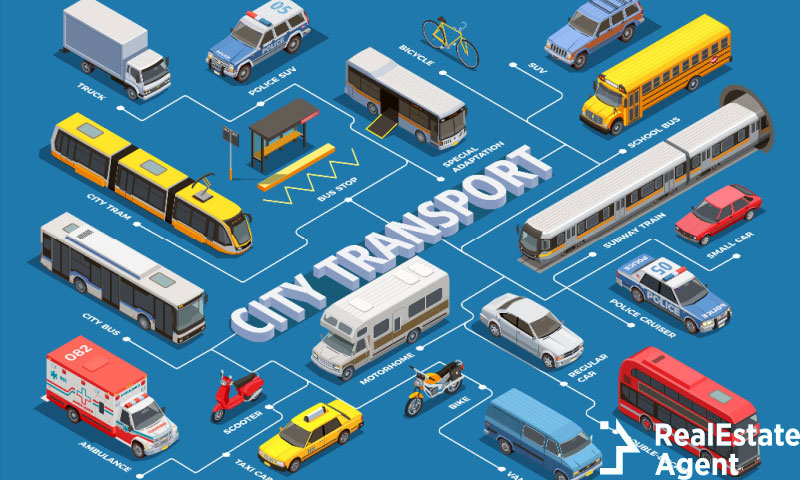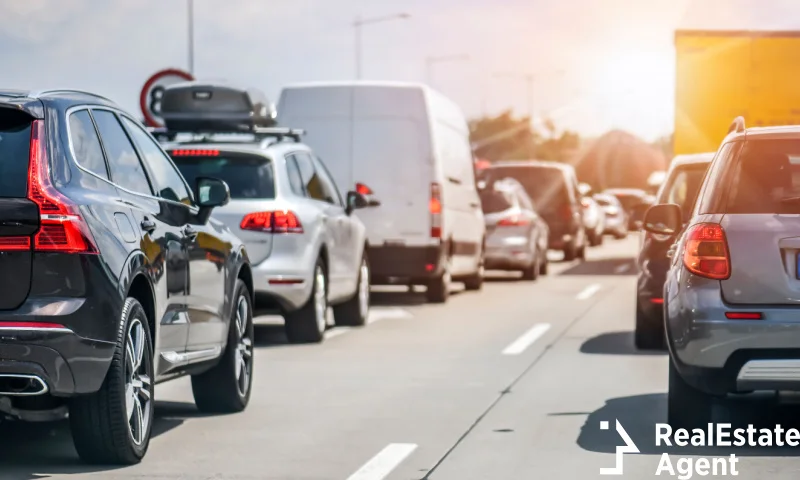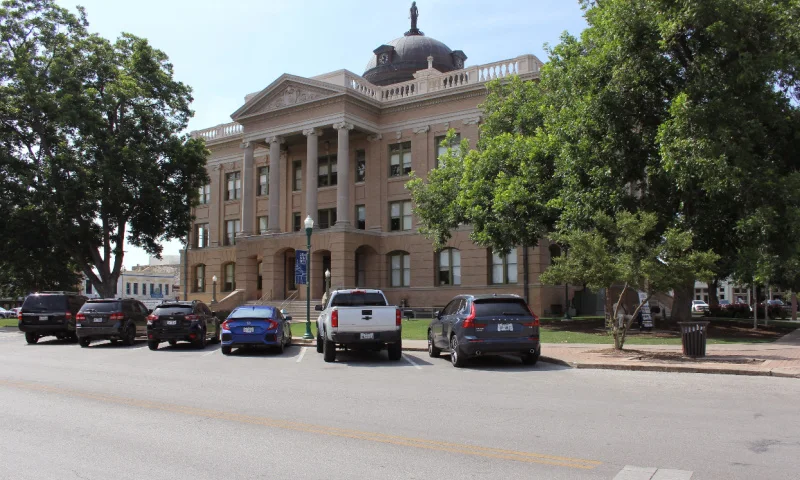Every US citizen that has had the fortune to travel to Europe was surprised by how incredibly different things work there. Whether it’s the fact that they use the metric system and not the imperial system, or all the walking everyone is just used to doing there, while Europe is still a highly developed area, the cultural shock is easily felt. That’s a perfectly normal sensation to feel because the two areas are vastly different. That might very well be why we generally don’t like these types of comparisons because they don’t seem fair. Either to Europeans or to Americans, someone is bound to be irritated by anything that’s being compared between these two parts of the world. While this irritability might come from the fact that Americans see Europeans as the old world, the one the colonies fled from in pursuit of religious freedom, or the Europeans don’t like being told what to do from a toddler given the US short history, differences breed irritability. Don’t believe me? Look at how people are treated based on what makes them different.
Still, this article aims to compare public transportation in Europe vs US so you know what to expect if you go on a wine tour across Europe. But first, we have to settle a few things. Whenever anyone starts to compare anything between the US and Europe, a few key factors are always misrepresented, labeled wrong, or simply the comparison is inaccurate. Comparing two different areas means that you have to understand what you are exactly comparing if you want your comparison to provide accurate and truthful information. That is why we will firstly cover some of the basic differences and similarities between the two areas before getting into the differences in public transportation in Europe vs US.
The US vs. Europe
Throughout this article, you will see the name “Europe” a lot and there is a reason why the title is Europe and not the EU. Let’s cover the basics and you’ll see where I’m going with this.
That should settle debates over which one is bigger, with a higher population and population density. What I want to focus on, however, from the table above is the government part. While the USA is a federal republic with 50 states that share laws, policies, and budgets at the federal level, that does not apply to Europe.
| USA | Europe | |
| Government | Federal Republic with 50 states | Continent with 50 democratic countries |
| Size | 3,797,000 sq miles | 3,938,000 sq miles |
| Population | 334.9 million (2022) | 748.5 million (2022) |
| Population Density | 94 people per mi2 | 87 people per mi2 |
While within the continent of Europe there is the political and economic union entitled the European Union, only 27 countries from Europe joined the European Union. That number is likely to climb in the following years, but so far 23 countries in Europe are not a part of the European Union. That distinction needs to be clear because we aren’t comparing the EU to the US, we are comparing the European continent to the USA. The reason for this is size, population and public transportation in Europe vs US. The EU is much smaller than the US which is why comparing the two would have been obsolete.
Keeping that in mind, consider that 50 countries in Europe manage to work together despite legal, financial, and cultural differences for a better connected Europe. This can be seen in everything from high-speed internet (faster in the East than it is in the West) to transportation systems, interconnectivity, and regional collaborations. And, precisely that interconnectivity is the purpose of this article.
Public Transportation in Europe vs US
The first thing that needs to be accepted when embarking on this comparison is that the two areas developed entirely differently. While Europe was already organized with cities, towns, and villages by the time automobiles became the dominant mode of transportation, most of the US cities and suburbs were developed when cars were already a commodity, not a luxury. That led to the sprawling, auto-centric metropolis in the US, while Europe already had a well-integrated and efficient public transportation system when cars became common. Even now, while there are newly developed suburbs, instead of limiting those residents to car dependency, they are integrated into the public transport system.
The irony is that while Europe was developed by the time the first railroads were built, it still managed to integrate this system within developed cities. On the other hand, the US was built due to the railroad industry, yet there is a lack of public transportation in America and an inefficient public transportation system that leaves many people and communities isolated by modern age standards.
Historical Differences
In Europe the first overground railway was drawn by horses was introduced by the coal mining industry in England in the 1500s. The first fare-paying, horse-drawn railway service for passengers was introduced in Wales in 1807 and reached many parts of Europe, East, West, and everything in between.
Not long after, on the 4th of July, 1828, the US started constructing the first track which opened in 1830. During this time the two areas had an approximate population of 208,000,000 in Europe and 23,192,000 in the US. The much-greater population of Europe started heavily relying on public transportation and by the time car ownership was common, Europe had over 210,000 km of the rail network with most European countries connected to each other. During that same time, while 60% of the US families owned a car in 1929, the US had 200,000 miles of rail network used for freight.
Ever since cars started to dominate transportation, while US cities were built based entirely on automobile infrastructure through highways and roads connecting various neighboring cities. On the other hand, many areas of Europe don’t have a satisfying automobile infrastructure by US standards even if it covers a larger area. If in the US there are 164,000 miles of highway, Europe only has a little over 48,000 miles of highway. Due to this, the public transport system bridges the gap. Cities were either already connected by train tracks or were built following existing train tracks, making the railroad system a part of that interconnectivity.
Passenger Travel Market Share
The way in which these expansive areas developed influenced the way passenger travel developed. Based solely on the market share for intercity and urban travel, when it comes to cars used for passenger travel, the difference is below 10% with the US at 78.8% and the EU (European Union) at 72.4%. Still, if you look at the other types of travel that can be used locally or regionally, in the EU 8.3% use buses, 6.7% rail, 1.6% tram and metro, and 0.4% water. In the US those stats are as follows: 7% busses, 0.5% rail, 0.3% tram and metro and 0% water.
Furthermore, if you take a look at maps of the public transportation in Europe vs US, you’ll see big differences. For example, in Europe only a small number of countries aren’t interconnected through railways: Georgia, Kazakhstan, Azerbaijan, Russia (transcontinental countries as they belong to both Europe and Asia), and Ukraine (Russia and Ukraine have different railroad tracks that can not be connected to the surrounding European countries). Looking at a map of Europe’s railway system you’ll see that most parts of the continent are interconnected through railways, even the UK, Ireland, and Scandinavia have tunnels for trains that connect them to the rest of the continent. The lack of public transportation in America, it’s another story. There are parts of the US that have some good mass transit systems (New York, Virginia, Florida, Illinois, small parts of Texas, California, and Washington State), but there are large areas with no connectivity like South Dakota, most of Texas, Nevada, and others. Besides this, there are parts of the countries, entire cities, and communities that can not be reached if you don’t have a car. Biking and walking aren’t commuting options and those without a car are isolated in their communities.
Europe Transportation
The European railway system is very dense and connects most major cities which are connected to each other through smaller cities, meaning that you can easily take a train in Portugal and go all the way to Norway solely by train, or from Turkey to the UK. Sure, you’ll have to change the train and maybe also use buses, but you don’t need a car for a trip around Europe. At the same time, in Europe, you can take a train or a bus to suburbs or villages from the bigger cities at an affordable price and with little to no worry. This is possible in Europe despite the vast differences between countries when it comes to public transport spending, infrastructure investments, and politics. Even more so considering that there are some restrictions for countries that are not a part of the EU or Schengen space. All these different countries are interconnected in one way or another through public transportation.
But when we look at road maps between the two areas, it becomes clear that the road network in Europe is not nearly as impressive as the one in the US as we mentioned above. That might lead you to think that European cities are congested and drowned in traffic, but they aren’t. But how did they do it?
- Disincentivizing the use of cars – high taxes on vehicles and gasoline makes it less appealing to own or use a car. This is not a viable option for the US due to car dependency in any job and the lack of public transportation in America.
- Providing Public and Private Transport Alternatives – the railway systems and other public transport systems make cars less necessary to such an extent that public transport is used by high-earning individuals and low-income earners alike. Public transport isn’t seen as welfare for those who can’t afford a car. This makes the cities less congested allowing car use for those who need it while also providing an efficient and affordable alternative for those who don’t.
The direction the European Union takes regarding city planning is different from the US, choosing to focus on strategies for sustainable urban development in making their cities smarter, greener, better connected, and social Europe. They do this by supporting locally developed territorial strategies to improve the quality of life in cities.
Even more so, Europe makes it possible to travel by bike throughout most of the continent. Of course, countries like the Netherlands, and Germany where gasoline prices were at $1.88, and $1.49 respectively in 2021 have the most developed biking system on the continent but even eastern Europe has plenty of biking roads that connect neighboring cities and even cross-border networks. For instance, even traffic priorities are different in the Netherlands, which has by far the best biking infrastructure in the world. The priority hierarchy gives the right of way in the following order in this biking paradise:
- Ambulances, Police, Firemen
- Public Transport
- Bikes
- Cars
- Pedestrians.
This means that bikes have a higher priority than cars and pedestrians. Walking around in the Netherlands as a pedestrian may be quite shocking for Americans, but even as a driver. However, it is common in the Netherlands for bikers to have some form of bike or biking insurance as biking accidents are common, but with far fewer casualties. And bikers in the Netherlands are used to 45-minute commutes to work or school.
US Transportation
The US is the most car-dependent country in the world but due to lower taxes on cars and fuel, around 91% of the population owns a car. However, given the lack of public transportation in America that leaves 9% of the population without a viable alternative as most American cities don’t have any type of public transportation. Furthermore, with the introduction of cars, the existing streetcar tracks were occupied by automobiles making them inoperable for streetcars. Many cities removed their streetcar tracks to make way for bigger roads.
In comparison, many densely populated European cities have road sections designated only for public transport making it possible for buses and trams to respect their schedule even during rush hour. The schedule for public transport is also different. While in America, you can wait for an hour for the bus making it unreliable, in Europe, there are usually several bus lines that stop at a bus station with 2-minute intervals between them.
Considering how dependent US transportation is on cars and the lack of public transportation in America, the need for parking spaces increased. Currently, there are around two billion parking spaces for the 250 million cars on the roads or eight parking spaces for each vehicle. In Europe, there are around 250 million parking spaces for 300 million cars. To make matters worse, the area dedicated to car parking in the US is bigger than the area dedicated to housing people. The European comparison can be seen through city planners focusing on removing parking spaces and transforming them into green areas, increasing walkability scores in major metropolitan areas like Paris but even in smaller parts in Eastern Europe like Oradea, Romania.
Given the lack of public transportation in America, those who can’t or won’t drive a car face a huge mobility barrier. In Europe, however, you can live a fulfilling life without having a driver’s license. You can travel short and long distances by other means of transportation and this results in fewer carbon emissions than in the US and a more active lifestyle. According to research done by ArchDaily, an average resident of western US cities like Phoenix or Los Angeles adds six times as much carbon to the atmosphere per capita than an average European city resident.
Conclusion
Through this comparison we aimed to showcase what Europe is doing differently in public transportation than the US. While there are parts, both in Europe and the US, where public transportation is better organized or worse, overall, across Europe public transportation is a viable alternative to both automobiles and air traffic, while in the US, major cities have some public transportation alternatives, but they aren’t as reliable, affordable and consistent as they are in Europe.
Right now, it is impossible to think of ways to implement such a highly functional system in the US, but measures are being taken locally to increase walkability in cities and improve biking infrastructure. Funding for such a transition will be incredible and the shift would be difficult to accept as mentality plays a large part in the issue. For the average US citizen, a car is equivalent to independence as you don’t have to rely on any other schedule to start your journey. In Europe, on the other hand, the public transportation system provides independence for anyone who doesn’t rely on a car. You can go anywhere in Europe and manage with buses, trams, trains, or bikes, which are far less expensive and consume far less energy (bikes consume leg energy alone).
Let us know what are your thoughts on the subject in the comment section below. We’re curious whether you think a transition towards a more efficient public transportation system would benefit the US. Like & Share this article with friends and family.














